DDP Studios handled on-set data and dailies management, colour, post and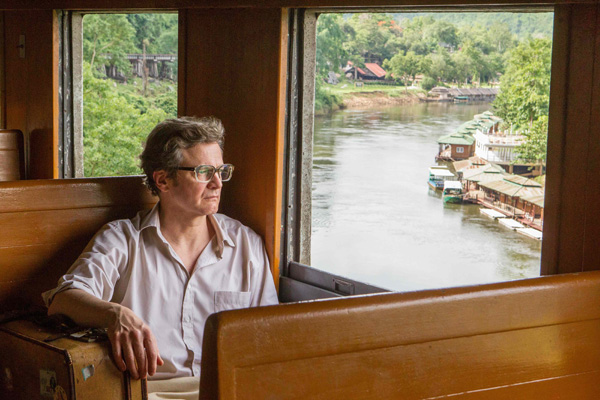
mastering for ‘The Railway Man’. Method Studios, the movie’s sole VFX vendor,
completed almost 150 shots.
‘The Railway Man’ Stays on Track with DDP & Method Studios |
|
DDP Studios completed all colour and post production services for ‘The Railway Man’, designing and handling the digital architecture workflow, on-set data and dailies management, online edit, colour grade, mastering and final deliverables for video, Digital Cinema and 35mm. Based on Eric Lomax's memoir, ‘The Railway Man’ describes his time spent working as a prisoner of war on the Thai-Burma ‘Death Railway’ and the years after his return. He meets and marries his wife and then discovers that the man responsible for the harsh treatment he suffered is still alive, and sets out to confront him. |
 |
|
These carts are customised mobile data systems built for daily digital rushes from shoot through to editorial delivery, on or near set, and are modular so that the components can be modified to meet the requirements of different projects. “For ‘The Railway Man’ we adapted the RANGER into a more mobile LITE version that included the CODEX DIGITAL system,” said Simon. Out on Location“We used the CODEX transfer station and software wherever we could to simplify the workflow on location, applying a combination of LUTs and on-set primary balance to deliver colour corrected dailies to editorial as DNx36 files, and to generate QT H.264 files to upload for streaming, This meant that dailies could either be viewed online or as the RAW files, accessible via the RANGER-LITE. The on-set colour was only carried through to DI as a guide, however - the colourist didn’t apply the same LUT through the grade.” All functions - data offload and mastering, duplication, deliverables and archiving - were performed on location. For continuity, the same kit was used for both locations, where there wasn’t much of a difference in relation to their tasks and equipment but they did experience quite a few challenges in Thailand in terms of the weather, travel, supply and courier logistics. “For example, while the editor could always see the images initially via online streaming, the DNx36 was couriered from location to editorial, which took quite a bit longer from Thailand than from Queensland,” Simon said. “The crew really had to put in a dedicated effort to keep it all rolling along.” |
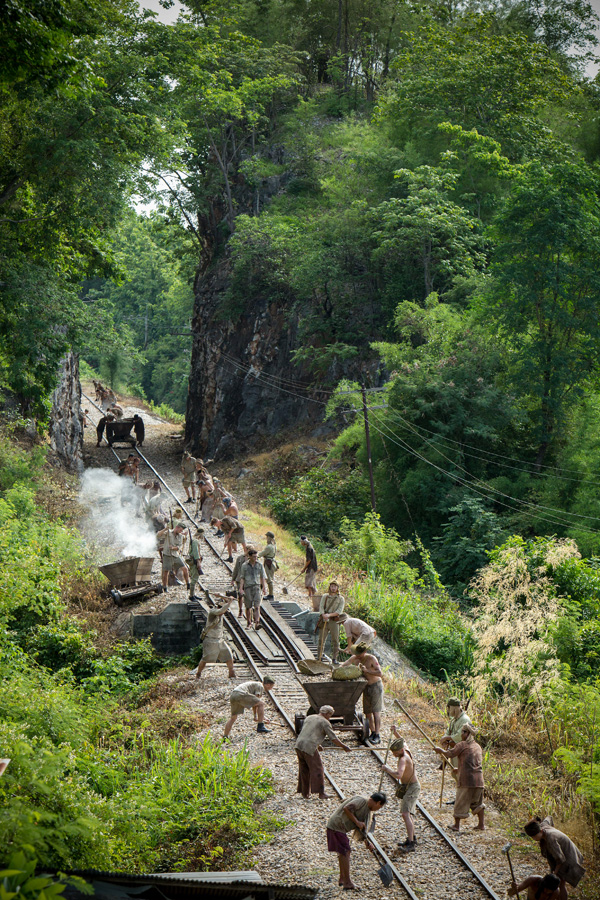 |
|
Revealing the PotentialSimon explained that because the whole process is digital now, the DI wasn’t handled as a separate entity but as a part of the evolving discussions on looks, beginning in pre-production and flowing through post as a global set of aims. Therefore, the colourist Olivier Fontenay was a key part of the client liaison team, working with the DI producers Katherine Heads and Catherine Duroux and data team. He used the Autodesk Lustre grading system, working with a projector. Because the story travels between the UK and the tropics, and between the WW2 era and the 1980s, scenes were shot with different looks in mind to help the audience locate the story in time and place and then further enhanced with colour grading. “We developed a colder look for Scotland, warmer on board the train when they meet and fall in love. The jungle in Thailand also had its own look, which meant the POW camp material shot in Queensland required extra grading to match that,” Olivier said. “Although we could carry the LUTs through to post, I was grading from scratch once I got the DI assembled. The range of colour data the ALEXA had captured in RAW mode let us make more decisions in post and be more creative. Most important, the work of the DP Garry Phillips was brilliant to start with, and that made the very best starting point. We just had to reveal the potential. |
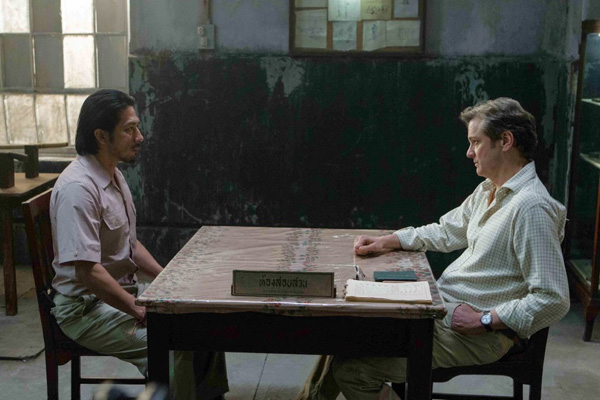 |
|
Time, Place, ScaleLike Olivier’s colour grade, subtle use of visual effects became another important tool helping the viewer follow the contrasting time periods and places that ‘The Railway Man’ traverses. Method Studios in Sydney was the project’s sole VFX vendor and completed almost 150 shots for the movie. Key scenes realised through visual effects range from the invasion of Singapore and the prison camps, to a series of train journeys. VFX supervisor James Rogers explained that as the action shifts in time between WW2 and around 1980, they often needed to create environments reflecting the passage of time. In other sequences they created the same environment within material that had been shot in different countries. “The scenes Thailand, for example, were shot in both Thailand and in Queensland, and needed to cut together seamlessly. The effects work not only included straightforward tasks like making Ipswich, Queensland, look like steamy Thailand, but also making the geography in 1940 and 1980 look similar, but with an obvious 40-year difference in levels of development,” James said. “We used lots of different tricks to make that happen, but mostly we built 3D matte paintings that would hold up at a variety of angles. Sometimes, with locations such as Hell Fire Pass in Thailand, we extended the sets, added more POWs working in the mud, and made the walls look more freshly hewn – as they would have been in WW2. Ultimately, what the visual effects do for ‘Railway Man’ is create a sense of scale as well as place scenes in the relevant time period. As a sensitive, topical drama, we had to approach the VFX shots in the same style, relying more on camouflage and subtlety than bold statements.” |
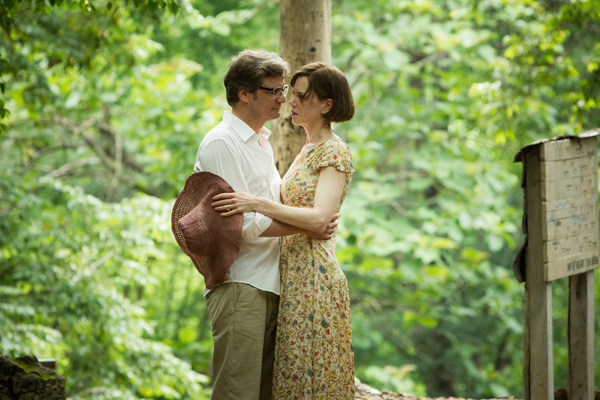 |
ResourcefulFor this project, they were able to cover all the work with a fairly standard set of tools – and a resourceful approach. The compositing was done in NUKE, matte paintings in Photoshop and Mari with Maya for modelling. The 3D work used Maya, Katana and Renderman. Regarding the tracking, he said, “The train sequences had been shot wide enough for us to simply track off the set, although for some of the 1940 train travel we created some fully CG point-of-view shots, including the train foreground “A particular shot of a burning tree was something Jonathan really wanted to capture to show the surreal nature of war, but we had no footage that we could build from. The basic shot was built within a week from a digital matte painting base. Interestingly, what really made it work was the camera motion – we used real footage of a train point-of-view and 3D tracked it. That, in turn, became the camera. While it may only seem like a detail, having a live action base to the shot made all the difference in the end.” Historical Research James Rogers supervised on location for the most demanding part of the film in terms of VFX, which were the parts shot in Australia. The Art Department supplied specific references to use when replicating vehicles and war paraphernalia, and also supplied detailed CAD plans of certain locations. “We were pretty well briefed in pre-production about how the scenes should look and also did quite a bit of research ourselves, particularly looking at footage and stills of the invasion of Singapore,” James said. “We tried our best to be historically accurate within the structure of the story, and as usual, also recorded textures so that we could reproduce what the live-action camera sees. The level of detail required varied from full-screen elements such as Hell Fire pass, to smaller less obvious things in the background.” |
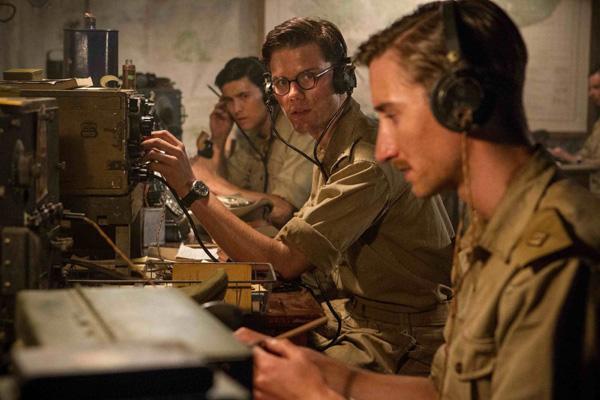 |
|
VFX CinematographyTrains, planes and parachutists were also built in 3D. For certain scenes, the entire train view was a CG environment. Doubling as VFX cinematographer, James Rogers led a small unit to collect backgrounds for the different train journeys. “We had a lot of train scenes that were very dialogue-driven and location-specific,” he said. “The live action for all of those scenes was shot with the actors on green screen, and then later in post, some of the backgrounds would end up as complete 3D CG – such as certain railway stations – while other locations were drawn from our VFX shoot. In the finished film, it is hard to tell which is which, but being able to do this gave great flexibility to the edit. “Because the live action had been shot during the UK part of the shoot and we hadn’t been there, we applied some reverse engineering to make sure that we matched those plates. We went out to get some very specific locations for as good a match as possible in the background plates, shot at 5K, intending to avoid having to manipulate them too much to make them work aside from removing the usual signs of modernisation. “We used a RED Epic on our shoot, although I would have preferred to use an ALEXA to match. The decision hinged on that fact that we were a tiny three-person crew and the RED workflow worked a bit better for the demands of the shoot. Nevertheless, I was extremely concerned about matching the images from the two types of cameras and paid a lot of attention to how we shot the plates, intentionally looking for a brooding, gloomy feel.” |
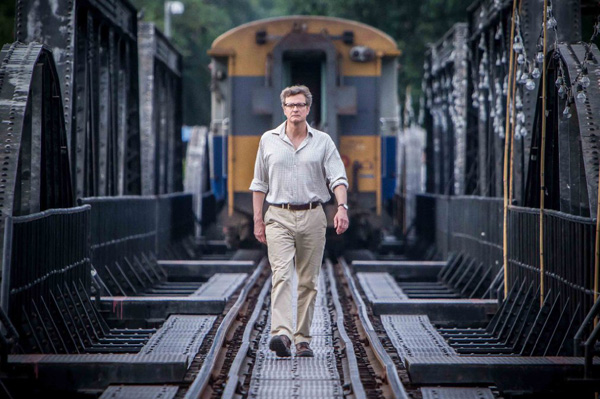 |
Train Travel - Continuity & CompositesHe created a breakdown based on the rough cut to define blocks of shots and according to requirements for time of day. He then divided those into a number of camera angles and grouped them into four angles only, making an educated guess that any variation would be covered in these angles. “Instead of worrying too much about light, I paid attention to the geography – this changes during the train journey and I wanted to make sure we maintained good continuity. By the end of the process I was very familiar with train travel,” he said. “Happily, the footage married well in the end. We captured a lot of good imagery that allowed us to find just the right piece to select for each section of the journey. We could use normal compositing tools to flatten any distortion pretty successfully – although, of course, any scene flashing past the window of a train is fairly forgiving! “We had some fun with the train travel composites – both the Thailand war-time sequences and the 1980s UK travel. We used a pixel tracking tool to measure intensity of the background lighting, which drove an exposure node on the foreground, so when the background brightened, so did the foreground cabin automatically. Likewise, when they went through a tunnel, the foreground would go dark, and so on. Sometimes it would work a little too well and we would tone it down so it wasn't so distracting. But it was fun to make simple tools like that to move through a number of background options quickly, and have them composite pretty cleanly in the first pass.” Singapore InvasionThe Singapore invasion was shot at Fort Lytton in Brisbane, which functioned as a foreground set. They created and placed Singapore in the background, added bomb hits and circling Zeroes, and replicated Japanese soldiers with 2D duplicates of on-set extras to bulk up the on-set numbers. The POW camps were shot in two different locations. The area where the soldiers were caged was shot in the railway yards in Ipswich, which looks very different from Thailand. James said, “We removed buildings, built and added 3D CG paratroopers, placed Thai mountains into the background and replaced skies. Some of the infrastructure was digitally re-painted to match the 1940s era. The other part of the camp around the soldiers’ tents was shot at Natural Arch in the Gold Coast hinterland. Initially we were going to replace a lot of the background escarpments with more Thai-looking terrain and add a wooden bridge, but as the edit progressed, these details became less and less important – and we turned our focus onto more obvious shots. “To help us out on some of the more substantial but ‘invisible’ changes we received a lot of stills from the on-set photographer, which became excellent reference for us. Because we were working to some very specific camera angles, and not making immersive 360° environments, we could take a simpler approach – that is, ‘dress to the camera’. This helped a lot in Hell Fire Pass as well as the scenes shot at Holy Island.” www.methodstudios.com |


















